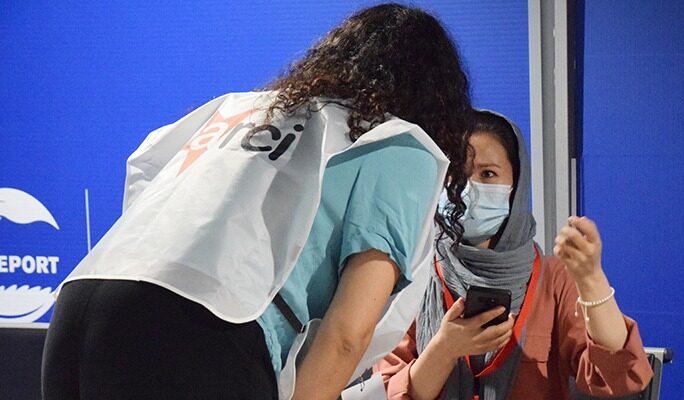What are humanitarian corridors and how do they work?
Humanitarian corridors are a safe and legal entry channel for all those seeking to reach Europe. In 2015, Italy became the first European Union country to experiment with this initiative.
Thanks to the protocol signed last December by the Ministry of the Interior, the Ministry of Foreign Affairs and International Cooperation, UNHCR Italy – the UN Refugee Agency, ARCI, the Community of Sant’Egidio, the Federation of Evangelical Churches, and INMP, it was possible to identify a series of particularly vulnerable people to be brought to Italy via a commercial flight.
The main weakness of humanitarian corridors lies in the limited number of beneficiaries.
The current protocol, which allows us to implement a corridor from Libya, foresees the arrival of 1,500 people over two years. Considering that more than 2,000 people lost their lives at sea in 2023 alone, these numbers are still very small.
Nevertheless, we take pride in being able to save human lives by preventing people from embarking on life-threatening journeys.
What will happen to the beneficiaries once they arrive in Italy?
ARCI has activated the network of “Circoli Rifugio” (Shelter Clubs) that implement the dispersed reception model.
The Circles offer apartments where the beneficiaries will be supported by a dedicated and professional team.
Upon arrival in Rome, the individuals will be accompanied by the designated operators to their final destinations. The cities that have offered availability include Rome, Avellino, Crema, Bologna, Pistoia, Chieti, and Viterbo.
As outlined in the protocol, they will spend at least six months in our facilities. During this time, they will receive support in the international protection procedure and, if necessary, be referred for inclusion in the public reception system (SAI).
What is the goal of the “More Corridors for Freedom” project?
Thanks to the “More Corridors for Freedom” project, supported by funds from the 8×1000 of the Italian Buddhist Institute Soka Gakkai, we can demonstrate that there is a safe and legal way to reach Italy and Europe.
The project aims to be a replicable best practice throughout Europe, as it is based on a 2009 European regulation. The regulation allows Schengen area countries to issue humanitarian visas. Italy did it, France replicated it, and now Belgium is also following suit. For us, it is important to show that it can be done.
Another strength of the project is its involvement of the local community, our member base.
Ordinary people witness firsthand and participate with their solidarity in building a path of welcome and inclusion for those who arrive in Italy today.
